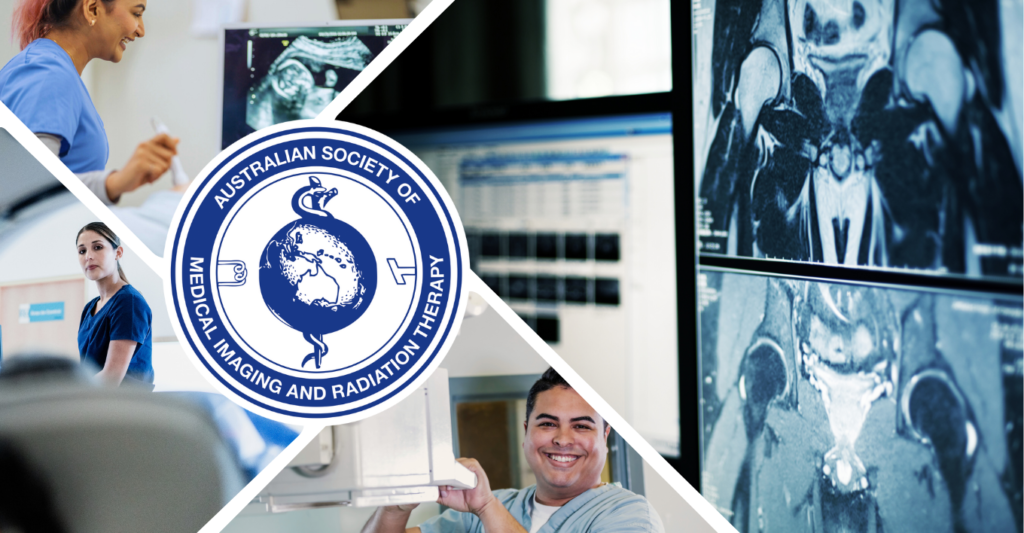ASMIRT represents health professionals who work in Medical Radiation Science. The four disciplines are Diagnostic Radiography/Medical Imaging, Radiation Therapy, Nuclear Medicine Technology and Ultrasound. Medical radiation sciences are at the core of the health system.
These statistics demonstrate the professions' impact:
ASMIRT members undertook more than half of these vital procedures.

Diagnostic Radiography is the production of high quality images to diagnose injury or disease. A pivotal aspect of medicine, a patient’s diagnosis and treatment often depends on the images produced.
Diagnostic Radiography uses both ionising and non-ionising radiation in the imaging process. The equipment used is some of the most sophisticated within medicine.
Radiographers perform more than 27 million imaging services each year in Australia, making diagnostic imaging a major component of our health system.
A Diagnostic Radiographer/Medical Imaging Technologist is responsible for producing high quality medical images that assist medical specialists and practitioners to describe, diagnose, monitor and treat a patient’s injury or illness.
Radiation Therapy is the treatment and management of cancer by radiation. It plays a major role in cancer treatment, with up to a third of cancer patients receiving a course of radiation therapy.
This treatment offers a cure in many cases and relief of symptoms in others. Cancer patients may undergo Radiation Therapy on its own or alongside other treatments like surgery and chemotherapy (drug therapy). The ionising radiation used in the treatment of cancer are x-rays, gamma rays and electron beams.
A Radiation Therapist is a key member of the professional team that manages the cancer patient’s treatment. Together with Radiation Oncologists, they are responsible for the design, accurate calculation and delivery of a prescribed radiation dose to the patient. The Radiation Therapist uses sophisticated imaging equipment and advanced computer systems to create a treatment plan. They deliver the optimum radiation dose to the tumour, specific to a particular patient and their diagnosis, whilst minimising the dose delivered to healthy tissue. Using highly sophisticated computer-controlled equipment, Radiation Therapists deliver the planned treatment with accuracy and precision.
A Nuclear Medicine Technologist uses radioactive materials to diagnose and treat diseases. These tech-savvy professionals prepare and administer small amounts of radioactive substances called radiopharmaceuticals to patients. Then, using specialised cameras and computers, they create detailed images of organs and tissues to help spot problems.
Nuclear Medicine Technologists work with all sorts of patients and use cutting-edge equipment every day. They play a crucial role in diagnosing serious conditions like cancer and heart disease.
To understand more of what these varied professionals do, visit the Australian and New Zealand Society of Nuclear Medicine.
Ultrasound uses high frequency sound waves to produce real-time images of organs, tissues and blood flow inside the body. Although many people call these images ultrasound scans, detailed ultrasound for the purpose of medical investigation is known as sonography. Sonographers examine many parts of the body and diagnose a range of medical conditions.
In Australia, sonography is a post-graduate qualification.
The sonographer directs high-frequency sound waves to the patient’s body via ultrasound equipment. This creates a clear image of the area for analysis and diagnostic purposes. Sonographers also interpret images, performing calculations and measurements so they can present their findings to the doctor for a diagnosis and treatment plan. Ultrasound testing is often used to view the foetus in the womb. For more information about a career as a sonographer, visit the Australian Sonographer Accreditation Registry website.
A career in Medical Radiation Science requires at minimum a relevant undergraduate qualification. You can only obtain a career in ultrasound through a post-graduate qualification.
Our education and employment section provides all the necessary information regarding study and entering the workforce.
ASMIRT has partnered with Explore Careers to highlight the medical radiation sciences among career options presented to high school students around Australia. Explore Careers is Australia's largest early-career and employment platform, giving young people the resources and advice to find the career that's right for them.


